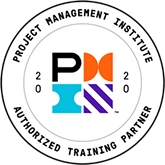Making the Business Case for New Opportunities
By Dr. Martin Schedlbauer
A sound business case is an important tool in project selection and the evaluation of investment opportunities. It outlines the benefits of a proposed project, the objectives addressed by the project, the different actions or decisions that would achieve the business objectives, the risks that may impact the project, and the costs of the project. The business analyst is often the lead author of the business case.
Purpose of the Business Case
Management looks to the business case for several reasons:
- Making a decision based on costs versus benefits
- Planning budgeting
- Defining project alternatives
- Maximizing returns while minimizing risk
- Monitoring progress
- Selecting the right strategy
Success Factors
A good business case is credible, practical, accurate, and quantitatively measurable. The successful business case allows the decision maker to choose a course of action with confidence.
 Analyzing Costs
Analyzing Costs
Eliciting all of the costs involved in an opportunity is the start of the cost-benefit analysis (CBA). Cost-benefit analysis defines the project's business value in terms of the costs incurred versus the benefits gained.
Types of Costs
The total cost of a project is the sum of all its costs, including all fixed and variable costs. Fixed costs are unrelated to the actual amount of work of the project or how much time is put into it. On the other hand, variables costs are incremental costs that vary with changes in output. So, the more work we put into a project, the more its variable costs increase. Equipment and rent are examples of fixed costs, while consulting fees are examples of variable costs.
Initial vs. Life-Time Costs
Aside from fixed and variable costs incurred during the solution’s development or procurement, a cost-benefit analysis must also account for the cost of ownership. The business analyst must identify the costs over the entire lifecycle of the solution. These costs generally include:
- Procurement and/or development
- Installation and transition to operational environment
- Operation, maintenance, and support
- Administrative overhead
- Sunsetting and decommissioning of replaced systems
Some organizations maintain standard cost categories and associated estimates for those costs. Find out what those are for your organization. If there aren’t any, consider building a business case template for use on later projects. Such an effort is part of building a business analysis center of excellence and establishing best practices.
Loaded Employee Rates
For employees, be sure to use a fully loaded rate that includes overhead. The loaded rate can generally be obtained from the Payroll Department. The loaded rate is generally an overhead factor, i.e., a percentage that is added to each dollar paid to an employee, e.g., 26%.
For example, if an employee is paid a $75,000 annual salary, then the actual project cost is inflated by the overhead rate. So, with an overhead factor of 26%, then the actual employee cost is $75,000 × 1.26 = $94,500 per year or $94,500 / 2088 = $45.26 per hour.
 Capital Costs versus Expenses
Capital Costs versus Expenses
Capital cost has value after the project has terminated. It becomes a corporate asset. On the other hand, an expense uses up or reduces capital and does not add to the balance sheet of the organization.
Accounting for Expenses
Some expenses directly reduce capital, whereas others reduce capital over time. Immediate expenses include staffing, software or other licenses (if used right away), materials, and leases. Depreciated expenses include software, hardware, licenses (if used over time), and machinery. Their costs are factored over time.
Accelerating Expenses
Due to the “time value of money”, it may be sometimes beneficial for some costs to be accelerated or delayed. Run various scenarios to determine most beneficial approach. Generally, deferring expenses is best in inflationary times, whereas accelerating is best in deflationary times or when tax rates may rise in the future.
Opportunity Cost
Opportunity cost quantities the “cost” of investing in one project instead of another, i.e., the value of the next-highest valued alternative. For example, what is the real cost of purchasing a software tool? It includes the cost of license for the tool, plus potential lost profit of investing the licensing funds in some other way, even if it’s just putting the money in the bank.
Consider another example in which a consulting firm plans to build a scheduling system for its work force. They have identified a number of programming activities for that project that require specialized skills. One of their on-staff consultants has this exact experience. That consultant’s salary is $125,000 per year. The specialized activities are estimated to require about 100 hours of his time. What is the cost to the project? The straight cost would be the consultant’s hourly rate multiplied by 100 hours, which would amount to an approximate cost of $6,000. Now, what if the consultant were not "on the bench" but rather could be billed out for those 100 hours at a rate of $150 per hour so he could generate $15,000 in billable revenue for the company?
In this case, what is the cost that should be charged to the project? It should be $6,000 plus $15,000: his salary and the “lost revenue” which is an opportunity cost. Some might argue that the $6,000 is a sunk cost and has to be paid no matter what so there's no incremental cost if the consultant is on the bench and therefore the project charge for his salary should be $0. For that perspective, the opportunity cost is only $15,000 since the $6,000 salary is counted as a sunk cost.
To summarize, there are a number of costs to consider and the calculation must be clearly explained in the business case.
Analyzing Benefits
Benefits are the return from an investment. Benefits can be qualitative or quantitative. Qualitative benefits are generally not measurable in monetary units or in some other objective way. On the other hand, quantitative benefits are measured in monetary units or rates of change.
Benefits must be defined in financial terms in order to perform cost-benefit analysis.
Types of Benefits
Benefits can be quantitative, such as reduction in expenses, increase in revenue, increase in market share, or reduction in risk, e.g., compliance. In addition, benefits can be qualitative in nature, such as improved employee morale or a more recognized corporate brand.
Common Benefits
Benefits must be quantifiable to be of value:
- Reduced processing errors
- Increased throughput
- Streamlined business processes
- Increased revenue
- Decreased expenses
- Decreased business risk
- Increased market share
- Increased customer satisfaction
Benefits that are not quantifiable cannot be measured and monitored. How would you know that the benefits have been realized? Benefits, like objectives, must be SMART. They must be specific, measurable, achievable, realistic, and time-bound.
Benefits Model
Benefits should offset costs incurred by a project initiative. Therefore, benefits generally:
- Reduce expenses
- Defer expenses
- Increase revenue
Benefits can also have indirect financial value, but those cannot be used to offset costs:
- Increase in market share
- Increase in customer satisfaction
- Increase in employee retention
- Decrease in customer complaints
Quantifying Benefits
For each benefit, determine:
- Quantity in monetary units using forecasting techniques
- Timing to know when financial values are realized using future value discounting
- Likelihood of realizing benefits by computing probabilities of outcomes
Estimate the variance in benefits by defining optimistic, expected, and pessimistic financial values. Assume that benefit quantities are optimistic and that probabilities are overestimated.
Monitoring Benefit Realization
Monitor the realization of benefits using these steps:
- Define benefit metrics and how benefits will be linked to measurable outcomes
- Define points in time where benefits will be measured
- Identify a single stakeholder who will be accountable for realizing the benefits
- Understand how a benefit may be realized differently across the organization
Performing a Cost-Benefit Analysis
Economic feasibility is an assessment of the practicality of a proposed solution in the context of the overall business and the value the solution adds to the business. Economic feasibility assesses the cost versus benefit of the solution. Several cost-benefit analysis techniques are used in practice:
- Payback or break-even analysis
- Return-on-investment (ROI)
- Net present benefit
Naturally, economic feasibility starts by quantifying the costs and benefits of the solution. No one, single formula is used to make a decision and often there is some subjective analysis applied once the financial analysis has been completed.
Time Value of Money
A key concept in cost-benefit analysis is the time value of money. When calculating monetary costs or benefits that are incurred or realized in the future, it is critical to take the time value of money into account. The time value of money accounts for inflation and reduction of value of money over time, except in a (rare) deflationary economic period. Instinctively, we all know that $1,000 of today’s money does not buy the same amount of goods in the future. Similarly, a $20,000 future benefit is going to offset $20,000 in costs today.
Present Value
To calculate the cost-benefit of a solution properly, all financial values must be brought to the same point in time, generally the present. To calculate the present value (pv) of a future amount of money (fv) you use the formula:

Where,
- n = number of years in the future
- d = discount rate, which is generally the rate of inflation or opportunity cost
For an example, what is the present value of a $10,000 savings realized by an information system two years after deployment assuming a discount rate of 4%?

Payback Analysis
In payback analysis, we calculate at what point in time an investment will have a benefit that outweighs the cost. The time it takes to recover the costs it called the payback period. Payback analysis is also often called break-even analysis.
The table below shows the calculations for a cost-benefit analysis of an IT project. We can see that we will break even in year 4 or after 5 years overall.

Value of Payback Analysis
Payback period is a common measure when comparing several projects. In general, shorter payback periods are better. Longer payback periods are indicators of greater risk as there is a higher likelihood that they may not be realized.
Net Benefit
Net Benefit is the difference between the present value costs and present value benefits of a proposed solution.

This is often used when multiple solution alternatives are compared. Choose the solution with the highest positive net benefit. Clearly a solution with a negative net benefit is not desirable and requires substantial intangible benefits to be of value.
Be sure to calculate the present value for all future benefits and costs and compare the present values, not future values.
Conclusion
A quantitatively analyzed business case is very useful when deciding whether to invest in a project and which project to fund if there are several alternatives. A sound business case must clearly define the present values of all costs and benefits to be credible. Benefits and costs should be quantitatively measured whenever possible so that the benefits and costs can be monitored and different projects can be compared.
About the Author:
Dr. Martin Schedlbauer, consultant and instructor for the Corporate Education Group, is an accomplished business analysis subject matter expert, and has been leading and authoring seminars and workshops in business analysis, software engineering, and project management for over twenty years. Beyond that, he is involved in architecting large-scale distributed software systems for many of his clients.
Business Analysis Training Solutions
With a trained team and the right tools and techniques, business analysis helps an organization implement new processes, reduce costs, and increase efficiency, productivity, and results.
For more information on this topic, as well as how Corporate Education Group can help power your organization’s performance, contact us via email or call 1.800.288.7246 (US only) or +1.978.649.8200. You can also use our Information Request Form!



